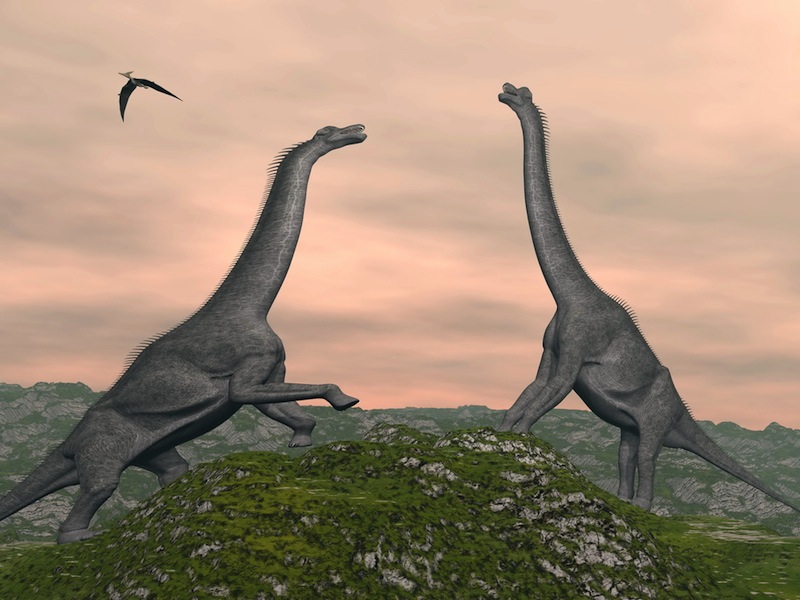Scientists May Have Wildly Underestimated the Giant Dinosaurs of the Ancient World

Don't worry about those big, dead herbivorous dinos— their leafy meals were likely much more hearty, wholesome and nutrient-packed than researchers thought. And there may have been way more of them than researchers once believed.
The conventional wisdom about the big plant-eating dinosaurs, like Brachiosaurus and Argentinosaurus, is that they had to eat huge amounts of leaves all day to grow to their massive sizes. Scientists came to that conclusion in part because the sorts of plants available millions of years ago were nutritionally poor and in part because the believed the high levels of carbon dioxide (CO2) in the atmosphere would have decreased the nutritional value of those plants.
But a new paper published July 11 in the journal Palaeontology suggests that this idea might be wrong. The researchers grew plants under superhigh CO2 levels like those found in the Mesozoic era (252 million to 66 million years ago, including the Cretaceous, Jurassic and Triassic periods), discovering that the vegetation's leaves had similar levels of nutrition to those of modern plants. [25 Amazing Ancient Beasts]
The leaves' nutritional value, tested by fermenting them and studying the gasproduced as a byproduct of that process, was marginally lower, on average, in higher-CO2 environments, but not significantly so, the study found. And some plants didn't become less nutritious at all.
That, in turn, means the plants of the era could have sustained a larger population of plant-eating dinosaurs than previously believed, the researchers wrote.
"The large body size of sauropods at that time would suggest they needed huge quantities of energy to sustain them," Fiona Gill, a paleontologist at the University of Leeds in the United Kingdom who led the research, said in a statement. "When the available food source has higher nutrient and energy levels, it means less food needs to be consumed to provide sufficient energy, which in turn can affect population size and density."
Which is to say: Heartier leaves would have meant more food to go around. That could have led to 20 percent more giant leaf-eating dinosaurs roaming the land than previously thought, the researchers wrote.
Sign up for the Live Science daily newsletter now
Get the world’s most fascinating discoveries delivered straight to your inbox.
However, the study can't say for sure that plants from hundreds of millions of years ago were as nutritious as today's plants, the researchers said.
First of all, the scientists don't know whether the specific species they studied (ranging from ferns to redwoods) were around during the Mesozoic era. Instead, researchers picked the varieties based on their similarity to plants found in the fossil record from that era. Second, the plants were grown in a range of indoor chambers where CO2 could be regulated, not a Mesozoic ecosystem. Third, the CO2 concentrations tested — 400 parts per million (ppm), 800 ppm, 1,200 ppm and 2,000 ppm — represent a range from modern CO2 levels to the higher estimates of Mesozoic CO2. They're not a precise replica of the concentration from the period, the researchers said.
The study may be bad news for a different group of ancient leaf-eaters. While the cell walls of the plants, which are important for large herbivores like dinosaurs, remained largely unchanged in different CO2 environments, the cells themselves were somewhat different. The researchers found that the leaves in high-C02 environments were lower in nitrogen, a substance important for leaf-eating insects. Tiny herbivores of the Mesozoic may have struggled to consume enough nutrition, and thus may have had constrained populations. However, the researchers wrote, that data wasn't firm enough to produce definitive conclusions.
Originally published on Live Science.










